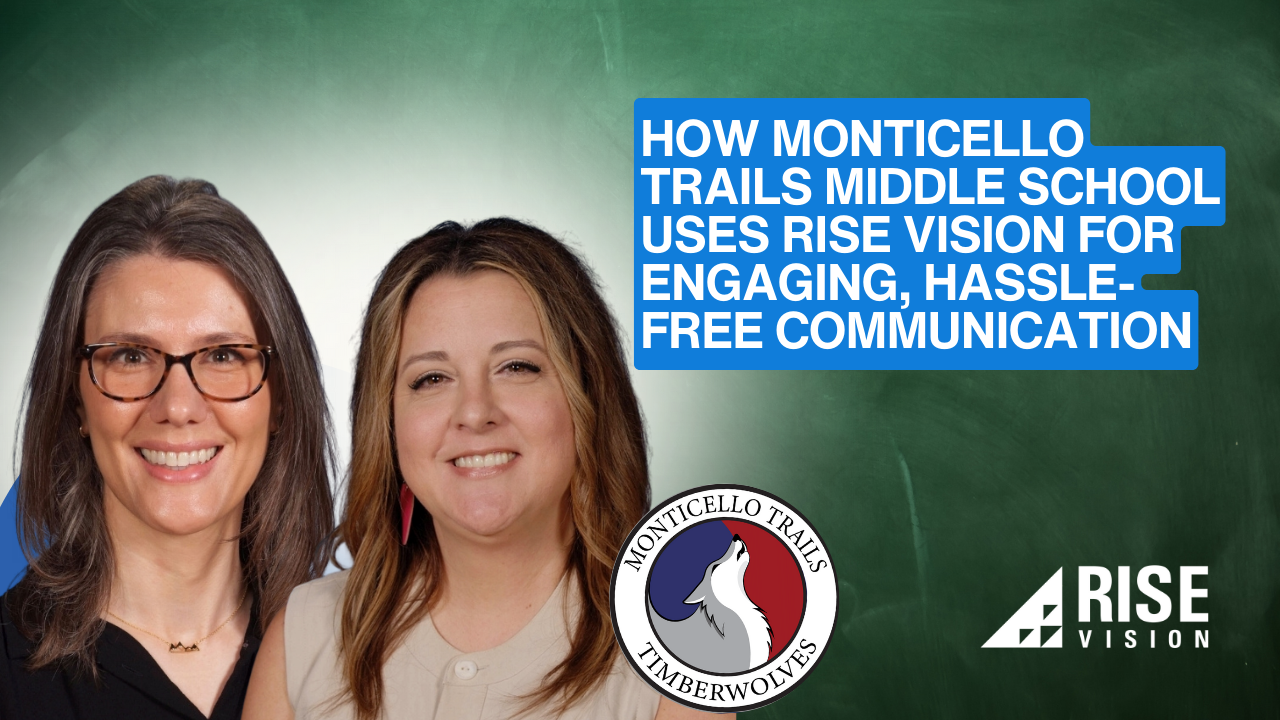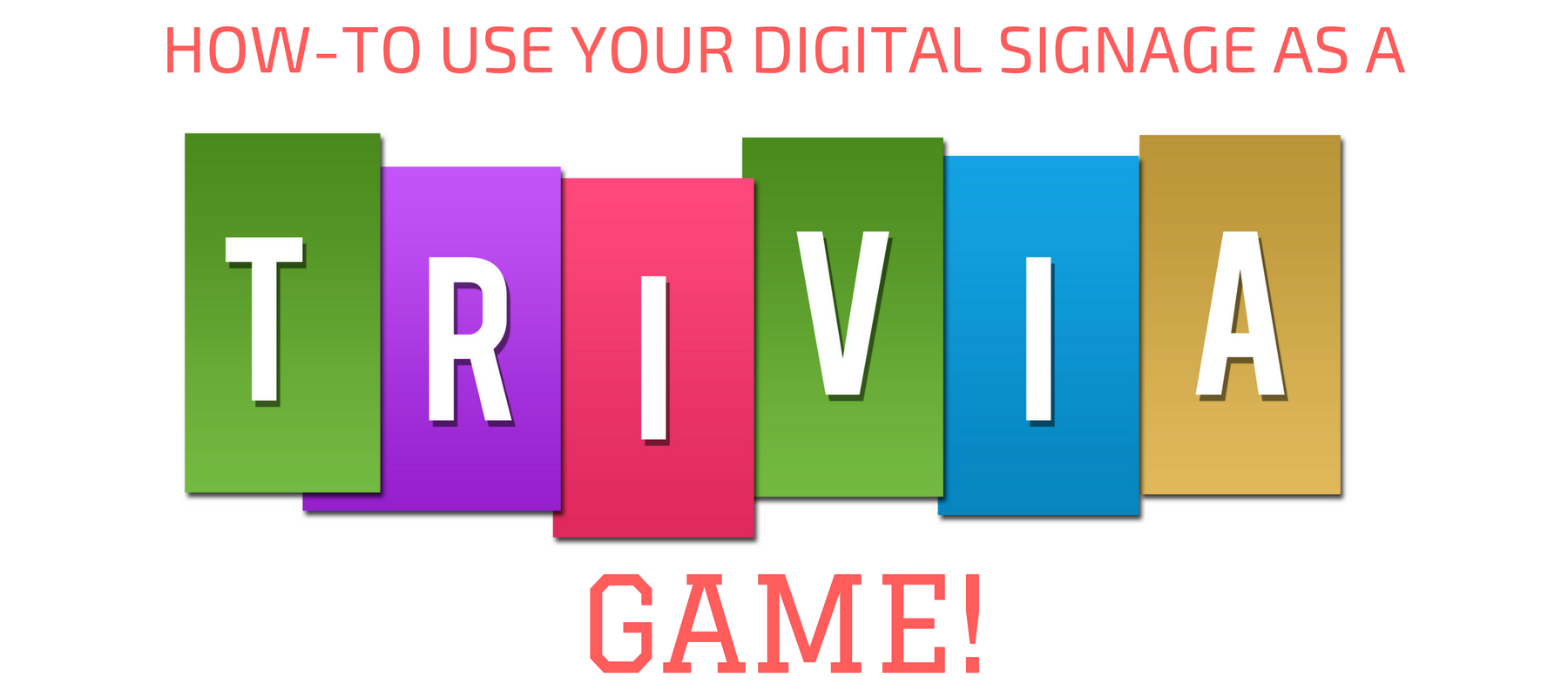
Digital signage software is a powerful advertising tool. More and more businesses are beginning to recognize this, raising the digital signage market value to almost $33 billion in 2023. That’s an 11% year-over-year growth rate from its value 7 years prior ($20 billion).
With dynamic digital displays that capture the audience’s attention and generate interest, digital signage can boost customer engagement and brand awareness. Ultimately, this pushes potential customers down the sales funnel, increasing a company’s bottom line.
But digital signage doesn’t only help you improve your sales. It can also be a source of additional revenue. Plenty of businesses maximize the profitability of their digital signage networks by selling ad space, using their in-house or in-store displays to promote other businesses for a fee.
If you’re interested in doing this to monetize your screens, your first question might be how much you should charge for digital signage advertising. In this article, we explore digital signage advertising rates and guide you on setting up your pricing and launching your digital signage advertising network.
Cost of Digital Signage Ads
There is no flat-rate fee for digital signage ads. Plenty of factors go into pricing your ad space, from the size and type of the ad to the duration and run time (more on this later).
But to give you an initial idea, digital signage ads usually cost $50 to $1,000 per month for small advertisements and $1,000 to $25,000 per month for larger ones. You can also charge per location or ad, depending on how many displays you have in high-traffic locations.
When determining how much you should charge for ad space, you should consider the cost of setting up and running your digital signage system, including your hardware, software, maintenance, and content creation. Taking these into account will help you come up with a pricing structure that fully covers the operation of your screens.
As a general rule, make sure your pricing packages are competitive. Consider the different factors that can affect digital signage ad pricing and compare your rates with those of other companies.
Factors That Affect Digital Signage Ad Pricing
As mentioned previously, several factors can affect how you price your digital signage ad space. Among the things to consider include:
Target Market
Of course, clients who are looking to purchase ad space will consider if your displays cater to their target market. The more specific the market of your display is, the higher you can charge for ads. This is because placing their ad on your display will generate awareness for them in their specific market group, making the ad space more favorable for them in terms of visibility.
For example, a digital signage screen in a retail store selling gym equipment will be appealing to businesses looking for ad space for their protein powders, supplements, or sports apparel. The cost of the ad in this instance will be higher compared to a business that, say, sells cosmetics or beauty products.
Ad Size
Another factor that can affect digital signage ad pricing is the size of the ad. Larger ads that take up more screen space will be more expensive than smaller ones that only show up as widgets or complementary elements on a screen.
Also considered here is the complexity of the ad. If the content has more graphical elements like photos or videos, the cost of the ad also increases.
When pricing ad space according to size, you can charge by the space the ad would take up on your screen as well as how many screens the client would like to use.
Ad Duration
The longer an ad shows up on your screen, the more exposure the client gets and the more likely they get good engagement from the audience. Naturally, this would mean that ad duration should affect the cost of a digital signage ad.
Longer ads are more expensive than shorter ones because they allow more visibility for the client. It’s also because long ads take up screen space, leaving you with no room to display other ads. It’s akin to selling a screen to a single advertiser, so make sure to take this into account when pricing by ad duration.
Ad Content
The complexity of the ad content will also play into the cost of the digital signage ad. Clients who want to display more interactive content or multimedia elements should be willing to pay more than those limiting themselves to static content. It costs more to get ad space for ads with images, animations, and videos compared to those that are text-only.
Ad Location

Location is a prime consideration when pricing digital signage ads. If your screens are located in high-traffic areas that can provide more visibility for the client, then you can charge higher for your ad space.
This is true for screens installed in shopping malls, airports, transport hubs, etc. Digital signage placed in affluent areas can also charge more for ad space compared to screens in lower-income locations.
On the other hand, if you’re selling ad space on screens with low traffic, you should charge lower because the ads will reach a smaller audience. Therefore the ad space is less valuable to advertisers.
Ad Run Time
Finally, the run time for the ad should also be accounted for when pricing your digital signage advertising network. Ads that run for a day should cost less than ads that run for an entire week.
If your client wants a longer ad run time, you can opt to offer discounts depending on the length of time they’re eyeing. This can incentivize them to run ads on your screens for longer, securing long-term additional income for your business.
Steps to Price Your Digital Signage Advertising
As you’ve seen, there are plenty of factors that you should think about when pricing your digital signage ads. To help you come up with a good pricing structure, here are some steps we recommend you take:
Determine Your Profit Goal
First, you need to identify how much additional revenue you’re looking to make from your digital signage advertising network. This will help you craft profitable ad packages.
When coming up with your profit goal, consider the cost of maintaining your digital signage system, from your hardware and software licenses to your operational expenses. Make sure your profit goal covers these associated costs.
To make it easier to measure your profit goal, set an end-of-year amount you’re looking to achieve.
Create Tiered Ad Packages
With your end-of-year profit goal in mind, create tiered ad packages for your digital signage ad space. Each of them should have different inclusions, benefits, and prices.
For example, you can have a gold, silver, and bronze package, with the more expensive option having more value and benefits than the cheapest one.
Fill Ad Packages With Value
You want to make your ad packages appealing to advertisers. Make sure each of them offers value that’s irresistible to advertisers with different budgets. Some good inclusions are a mix of ad placements, paid posts, website banners, newsletter positions, etc.
Think About the ROI
The biggest mistake businesses make when pricing their digital signage ads is getting greedy with their rates without offering any actual value for their clients. While your pricing should reflect your needs, you should also consider the return on investment that your advertisers will be able to achieve by purchasing ad space on your screens.
Make sure the money they’re spending on you actually results in a positive return for their business. Your pricing should be a good investment that helps them achieve their marketing and advertising goals.
Setting Up Your Digital Signage Advertising Network
Hopefully, we’ve given you a better idea of how you can price your digital signage ad space for profitability on your end and value for your clients.
If you haven’t already, you can start setting up your digital signage advertising network. Here’s how you can do so successfully.
Find High Traffic Locations

To earn more from your digital signage advertising network, we recommend starting with 10 displays, each positioned in high-traffic locations. This can be hotel lobbies, shopping malls, groceries, convenience stores, restaurants, coffee shops, transport hubs, or hospitals, depending on your target market.
You want to make sure that the locations you select are within proximity to one another so you can cater to advertisers serving that particular area. Aim for a two-mile radius distance between your screens.
Choose Your Business Model
Next, choose your business model, depending on how you’ve decided to price your ad space. Here are two options we recommend:
- Charge a yearly fee of $300 for one location and sell 50 ads per location. This will yield $15,000 per screen location. With 10 screens, you get $150,000 per year in revenue.
- Alternatively, you can charge $2,500 for all 10 locations and sell 50 ads per location. This will also give you $150,000 per year in revenue. You can also reduce the cost a bit and charge $1,500 per year for all locations, which would generate a yearly income of $75,000.
Install Your Screens
Now it’s time to install your screens. In addition to the display itself, each location should have a media player for the easy deployment of ad content. Make sure to follow the best practices on screen placement, lighting, and other considerations for the best results.
If you want to earn a little more from your digital advertising network, you can target clients in the food industry by offering a digital menu board. That way, you can monetize your hardware and offer backend services like content management software, maintenance, updates, and others. This will yield another few thousand dollars per job.
An interactive touchscreen kiosk is also a profitable option, allowing you to place unlimited ads that show up at different stages of the customer interaction journey.
Calculate Loop Time
Loop time refers to the length of time all ads run from beginning to end. It’s important to calculate this to determine how many ads you can fit on a single screen. When calculating loop time, remember that viewers spend different amounts of time in different locations.
For example, a person in a convenience store will only spend an average of five minutes to get what they need. In that case, a digital display in a convenience store will require a loop time of five minutes or less. If your digital signage is located in a gym, you can have a longer loop time as most gym goers spend an average of 60 minutes in the gym.
A convenience store display can fit 30 ads if each one shows up for 10 seconds. In a gym, you can fit 360 10-second ads in a single display.
Sell Ad Spots
When everything is all set, you can begin selling your ad spots. Advertise your digital signage advertising network both on your screens and on your professional website. Make sure your website can accommodate all your packages and has a payment portal where you can accept payments by card or online wallet.
Encourage Renewals
When you acquire clients for your digital signage advertising network, you can count on them to renew on a yearly basis. But you have to do the work to get those renewals. Take care of your clients and make sure they’re getting the results they need from your digital signage ad space.
Continue advertising your digital signage advertising network, including your pricing, available locations, and contact information to generate more leads.
Tips for a Successful Digital Signage Advertising Network
Setting up a digital signage advertising network is a profitable venture as long as you do it right. Below, we reveal our top tips to help you set up and manage a successful money-making digital signage advertising network.
Create a Professional Website
Your website will serve as the primary platform where potential clients can learn more about your digital signage advertising network, find your packages, contact you, and ultimately, avail of your offer. Because of that, you need to build a professional website that attracts and converts.
Create a professional website that communicates all the information to interested advertisers and encourages them to sign up for a package. Make your website intuitive and prioritize facilitating an easy and stress-free research and purchasing process for users.
Use Marketing Tools
To get clients for your digital signage advertising network, you have to let them know you exist. Generating awareness and interest for your ad space can be done with a solid marketing strategy. Use your website to market your offers and packages and try B2B marketing tactics, like email outreaches or social media marketing.
More importantly, leverage your digital signage screens! Create content targeted to advertisers, letting them know they can purchase ad space on your displays. Don’t forget to provide your website and contact details!
Create Contracts and Liability Clauses
You want to formalize your agreements with advertisers who purchased space in your digital signage advertising network. Make sure every one of your relationships comes with a contract and liability clauses, as well as clear terms of service. This will reduce miscommunication between you and your clients and ensure the duration of your contract runs smoothly.
Have Extra Hardware
While 10 screens is a good place to start, you want to plan for the growth of your digital signage advertising network. Have extra hardware on hand, including screens and media players in case you need to add locations to accommodate more interested advertisers.
Similarly, make sure your software can accommodate multiple screens and works with any media player to make it easy for you to change, update, and deploy content as necessary.
Use Powerful Software for Your Digital Signage Advertising Network
A digital signage advertising network allows your business to monetize your displays and earn additional income from your investment. A lot of planning and preparation comes into selling ad space, from coming up with your pricing to marketing your offer.
You also need to invest in reliable digital signage software that can power up your network of displays and simplify the management and maintenance of your digital signage advertising venture.
Rise Vision is the number one cloud digital signage software solution that can support your digital signage advertising network. Our free digital signage platform is easy to use and works with any player on multiple screens. The software comes with a range of features and capabilities that can make hardware, software, and content management a breeze.
Get a free demo to learn more about Rise Vision’s software.





